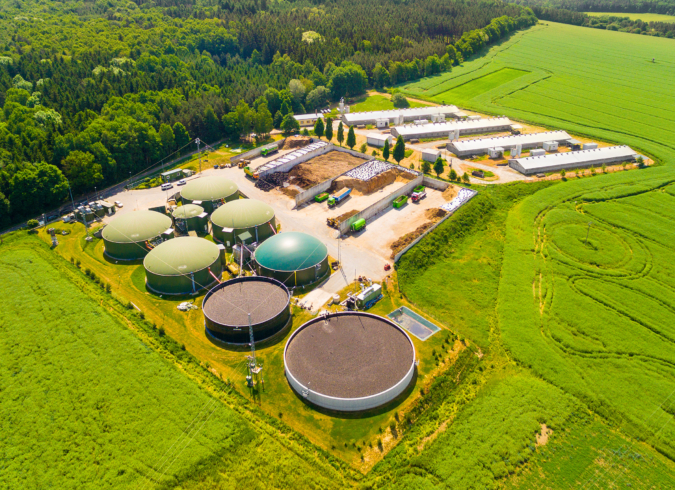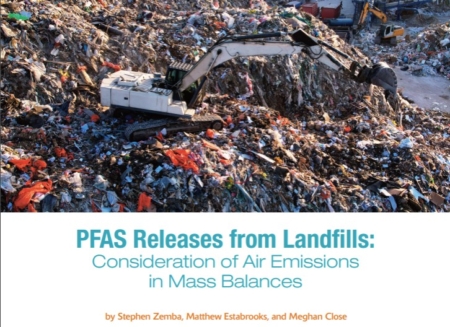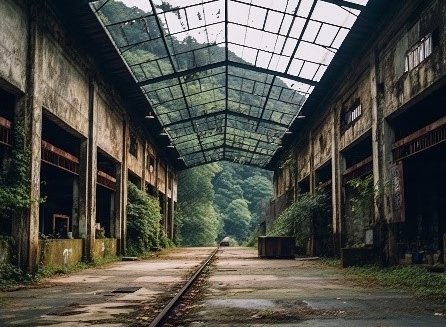Renewable Natural Gas (RNG), though not a new concept, has emerged in recent years as an exciting opportunity for society to capture methane that may otherwise be released to the atmosphere for beneficial reuse within industries that have been grappling with the challenges of reducing greenhouse gas emissions. Though the residence time of methane in the atmosphere is far shorter than carbon dioxide, methane possesses a warming potential on the order of 80 times greater than CO2, so an emphasis on methane emission reduction has been elevated among both regulators and industry. That said, with every challenge lies great opportunity and this challenge is no different. Through a combination of technological innovation and market-based regulatory incentives, a robust market for RNG has emerged.
Background Information
RNG is composed of methane-laden gas refined to the point that it can be used interchangeably with natural gas for traditional applications such as electricity generation, transportation fuel, or utility-grade natural gas. RNG is commonly created by refining landfill gas generated from waste decomposition at landfills landfill gas) and from accelerated degradation of organic waste feedstocks through the use of anaerobic digestion (think wastewater and agricultural/food waste). A more detailed summation of these processes can be found in the diagrams prepared by USEPA below:
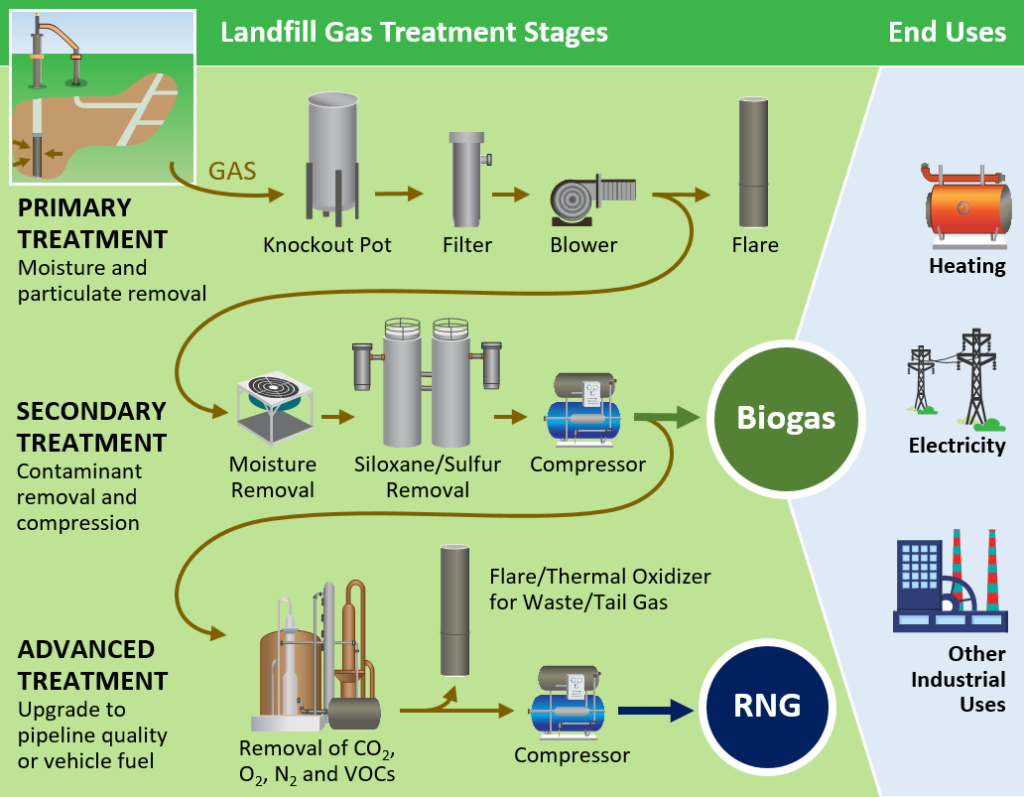
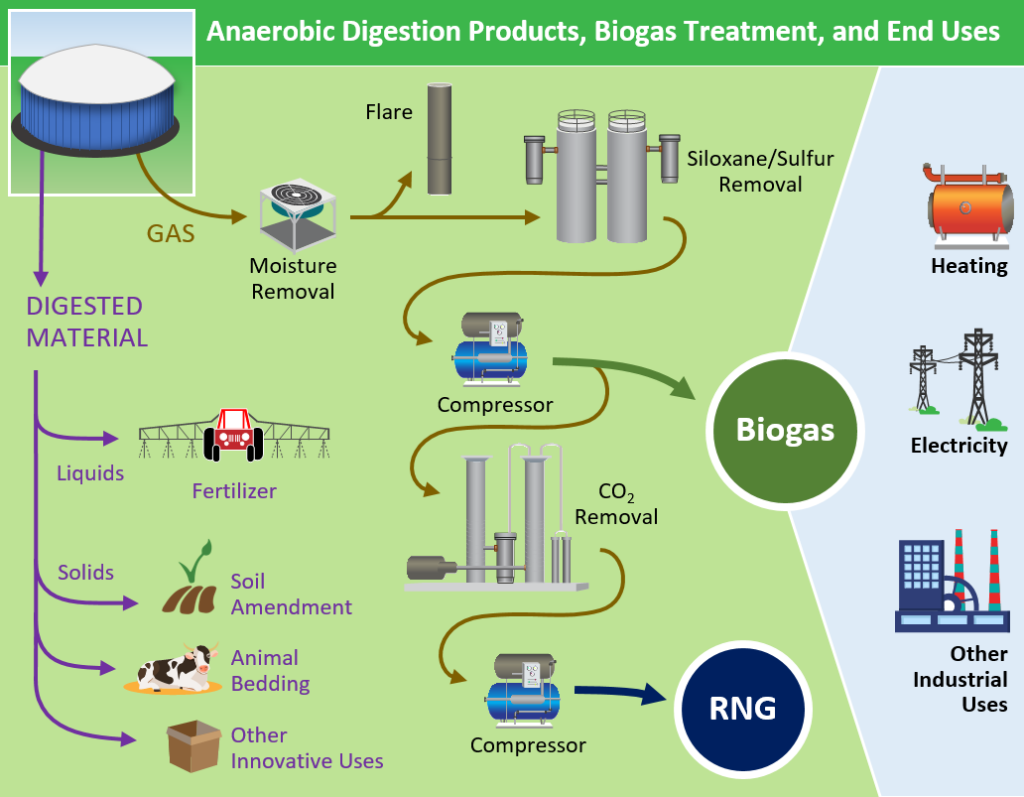
RNG Market Economics
At this time, there are several state and federal markets in place to incentivize the use of RNG to displace traditional uses of fossil fuel. The currency traded in these markets differs slightly based on the structure of each state or federal program and, as a result, RNG projects are often initially conceived to cater to these programs. For example, in California’s Low-Carbon Fuel Standard (LCFS) program, RNG is assigned a Carbon Intensity (CI) score based on its ability to remove otherwise fugitive global warming gas emissions. In this program, the assumption is that due to existing regulations, landfill gas would already be flared to lower emissions and re-directing this gas for use as RNG would only provide a marginal reduction in CI.
Conversely, with livestock-based anaerobic digestion projects, methane emissions at these sites were not previously regulated and the installation of an RNG project provides a substantial reduction in CI, making this fuel far (and more importantly it’s associated credits) more valuable within this given market. The graph below shows the aggressive growth of RNG projects in the US and, in particular, agricultural anaerobic digester projects whose growth is quickly accelerating in the U.S. due to their lower carbon intensity score which correlates to greater value for RNG developers over landfill gas projects.
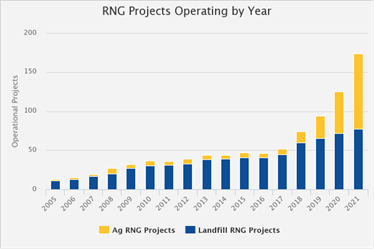
Sanborn Head and RNG
The management of waste streams, harnessing of methane gas, and design of natural gas systems represents a confluence of strategic, regulatory, and technical demands that align with expertise that Sanborn Head has provided to clients in the Solid Waste and Natural Gas industries for decades. As a result, our team has been fortunate to assist both longstanding and new clients with the challenges and opportunities presented within the emerging RNG economy. Simplistically, our team has been engaged by both upstream and midstream owners and developers within the RNG industry to help them navigate the equation below:

More specifically, within the RNG Space, our team contributes to such projects from conception through construction to help our clients unlock opportunities within their value chain to capture the vast opportunities associated with this growing market:
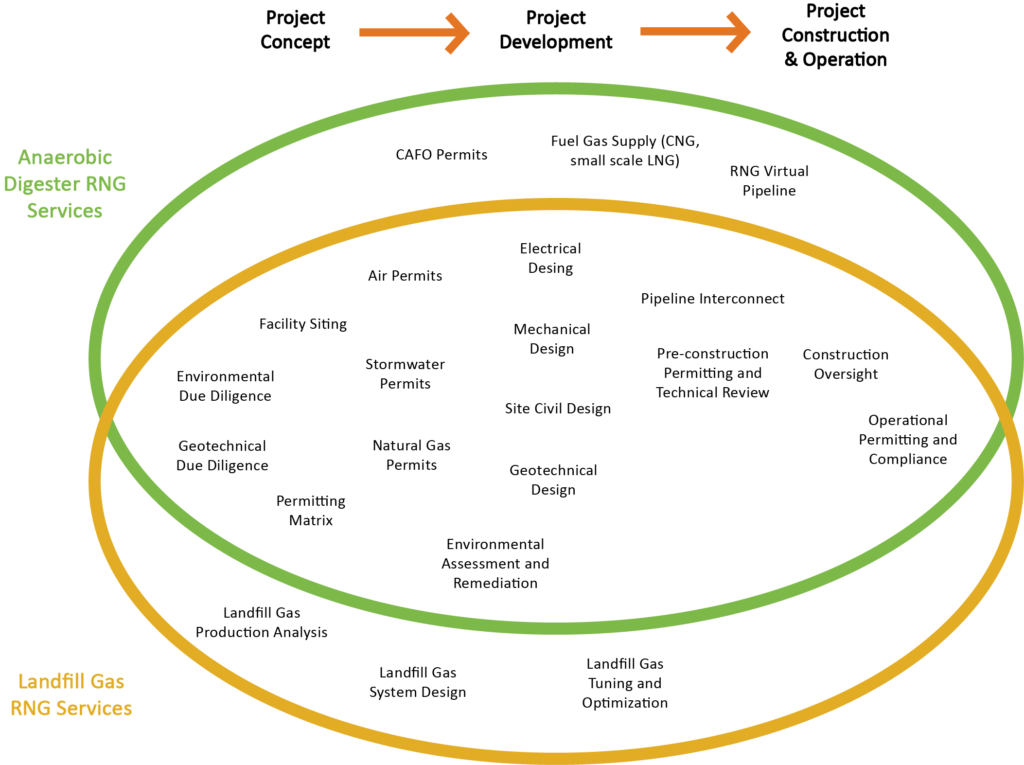
Emerging Opportunities in the RNG Market
Sanborn Head has been fortunate to have a front row seat assisting clients with advancing landfill and farm-based RNG projects over the past several years. These cross-discipline opportunities have given our team the opportunity to assist with projects that are not only technically aligned with our expertise but are culturally aligned with the collaborative and entrepreneurial spirit of our employees. As a result, we have found that RNG projects consistently generate tremendous enthusiasm within Sanborn Head and have elevated our staff to generate creative engineering solutions that are often greater than the sum of their parts. With creative and ambitious clients trying to capture opportunity in such a rapidly evolving market, again we feel fortunate to have found such incredible alignment of purpose.
Looking ahead, our team is anxiously observing the RNG market’s evolution and have our eyes on a few potential catalysts that have the potential to sustain this momentum for years and decades to come including:
- Applications of RNG beyond transportation:
- Widespread RNG blending within natural gas utility infrastructure
- Campus-based RNG systems
- RNG to hydrogen
- More widespread use of co-digestion to help re-purpose food waste
- Emergence of new RNG-based credit Markets including
- RNG to electricity
- RNG to hydrogen
- Continued addition of new state transportation-based programs modeled off the highly successful California LCFS program
In sum, we at Sanborn Head are always reminded of how fortunate we are to serve clients who are shaping the RNG Market and are excited to assist them as they continue to invest in new and creative RNG projects across the Nation.
Posted In: Articles
Tagged In: Development, Solid Waste

